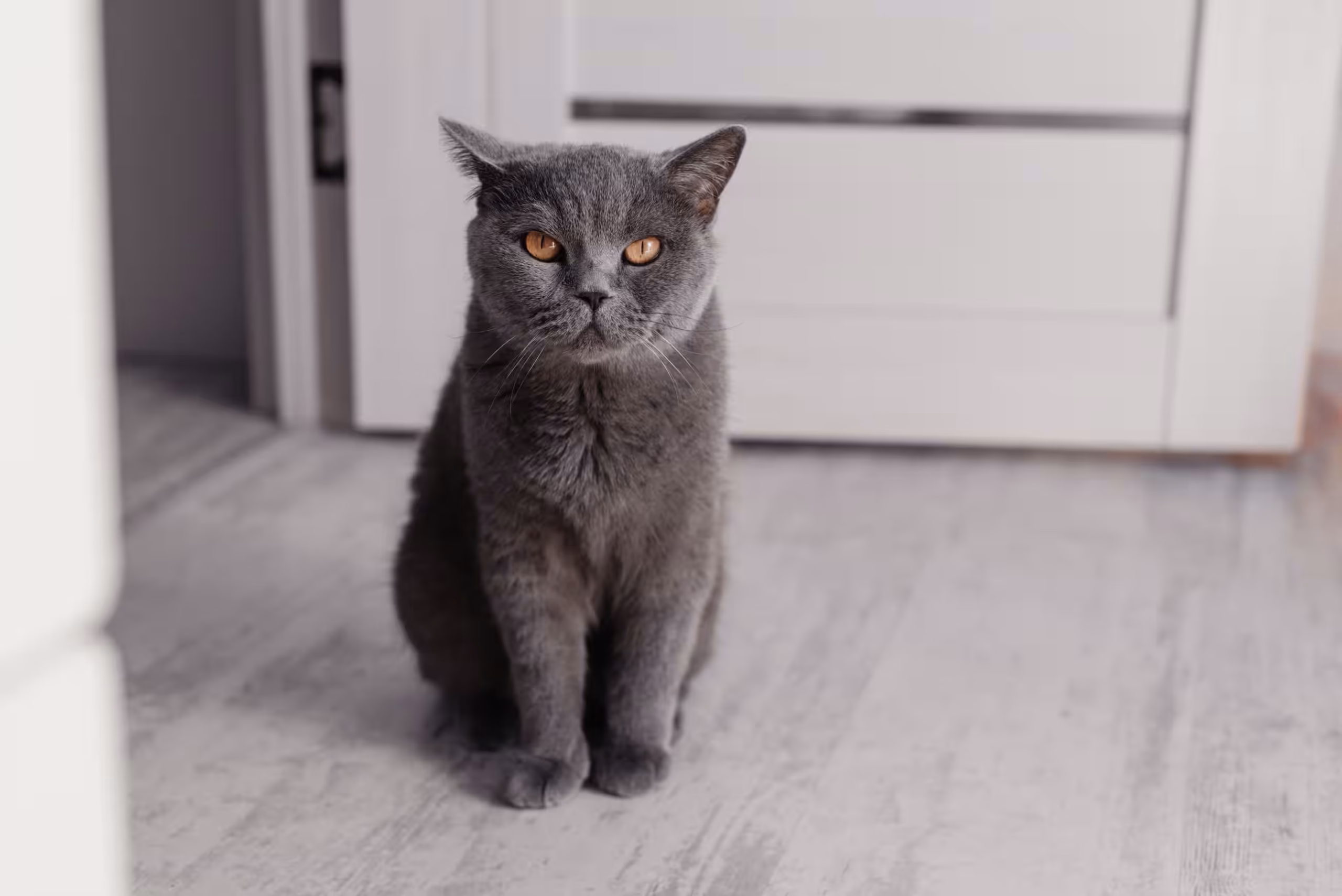They do what they want, when they want – and perhaps there’s a lesson in that for us: how to live in the moment, be content, and learn from experience.
Curious about just how much time I actually spend pondering the inner lives of my cats, I turned to the ultimate modern oracle – Google. A quick glance at my search history revealed that, since adopting my first cat two years ago, I’ve asked questions like “does my cat love me?” and “is my cat happy?” no fewer than 17 times. I also seem to have accidentally subscribed to cat updates from Quora – which now provides me with a daily feed of feline dilemmas. (Recent example: Can Cats Be Angry or Disappointed With Their Owner?)
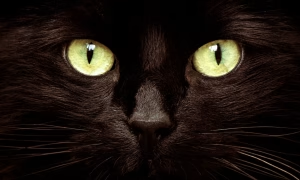
My affection for my cats runs deep. The crisp snap of Larry’s jaw as he watches me with that characteristic feline detachment is oddly comforting. I adore the sound of Kedi, my six-month-old kitten, as he trails after me around the house, chirping and squeaking in a language I’m only just beginning to understand. (High-pitched squeals? He’s hungry. Low, playful trills? He wants to play.) At night, Larry curls around my feet, and Kedi wakes me with gentle licks to my eyelids. It’s love – of a particular kind.
But how much of that is real affection, and how much is me projecting human emotions onto my cats? Can I trust those cutesy internet articles in script fonts that claim to reveal the truth? Probably not. If I want to understand what’s really going on in the feline mind, I need to dig deeper.
Despite being one of the most popular pets in the UK, cats remain something of a scientific mystery. Dr Carlo Siracusa of the University of Pennsylvania’s School of Veterinary Medicine says that’s partly down to logistics. Dogs are relatively easy to study in a lab setting, but cats are far more sensitive to their environment. Move a cat into a lab, and its behaviour changes so much that it no longer reflects what it would do in a natural setting.

There’s also a lingering cultural bias. Cats have long been misunderstood – seen as aloof, even sinister. “They’ve been stigmatised as evil because they’re thought to be amoral,” says philosopher John Gray, author of Feline Philosophy: Cats and the Meaning of Life. “Which, in a way, they are – they just follow their nature.”
So, most research into feline behaviour happens in the home, often conducted by cat-loving scientists themselves. “Of course I love cats,” says Dr Saho Takagi of Kyoto University. “Their mysterious nature drew me in. I constantly wonder – what are they thinking? How do they see the world?”
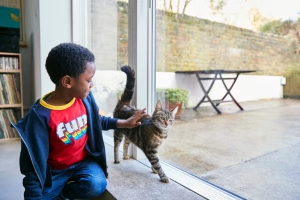
Takagi recently co-authored a study that found cats can mentally map their owners’ locations using only sound. In the experiment, cats heard their owners call from one place, followed by the same voice coming from a different location. The cats reacted with visible confusion, suggesting they were tracking their humans even when they couldn’t see them. “They seem to be paying close attention,” says Takagi. “They may be carefully observing everything we do, trying to anticipate what comes next.”
People often claim cats are cold or self-serving. But according to Siracusa, “Cats do form attachments – to people and other animals.” Unlike dogs, who might express affection with enthusiasm, cats often show love simply by being nearby. Sharing space is their way of bonding. Cats that grow up together will often be “preferred associates,” though even the most affectionate cat usually isn’t keen on being hugged or picked up. “Most cats really don’t like it,” he says.

The problem is, we expect cats to behave like humans – or at least like dogs. But as Siracusa puts it, “Cats are not people, and they’re not dogs.” They don’t wag their tails or jump up for cuddles. Instead, they approach, give you a head bump, maybe settle beside you, then move along – the very picture of nonchalant elegance.
Their ancestors were solitary African wildcats, which helps explain their independence. “Cats aren’t social animals,” says Dr Karen Hiestand of the University of Sussex. “They don’t need friends.” Still, in homes with more than one cat, mutual grooming is a sign of affection. Watching Larry and Kedi wash each other is one of the daily joys of my life.
Cats can suffer from something like depression – though Hiestand is cautious about applying human mental health terms to animals. “If it looks like a horse and sounds like a horse…” she says. The trouble is, feline misery is subtle. Unlike dogs, who might lash out or whine, a sad cat will often just go quiet. “A still, withdrawn cat might be suffering,” she explains. “There’s a whole range of unhappiness we just don’t see.” Changes in behaviour are key – like Siracusa’s cat, Elsa, who became unsettled when he started working from home. He says giving her probiotics actually seemed to improve her mood, reinforcing the connection between gut health and emotional wellbeing.
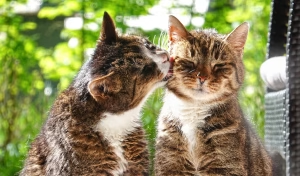
Cats remember things, too. When Larry burned his paw on the induction hob, he avoided the kitchen counters for months. Even if I placed him up there, he’d jump off immediately. “Negative emotional memories are particularly sticky,” says Siracusa. “They help animals avoid danger in the future.”
And it’s not just trauma they remember. Takagi has studied cats’ episodic memory – the ability to recall specific past experiences. In one experiment, cats were fed from different bowls, each associated with a certain food. Later, when the bowls were rearranged, cats remembered which bowl had what, and under what conditions. “They could recall a one-time experience and use it,” she says. “That’s episodic memory – just like in humans.”

Cats also dream. “Some anaesthetic agents we use can cause hallucinations,” says Hiestand. “I always wonder – what are they seeing? Giant mice?” She believes feline dreams likely resemble ours: a mix of memory consolidation and imaginative processing. “Their brains aren’t that different from ours in that respect.”
What cats can’t do, however, is plan for the future. “They don’t have the frontal lobe capacity,” Siracusa explains. So if your cat poops on the couch after you leave, it’s not revenge – they’re not plotting your discomfort. And if Kedi knocks over my laundry rack, he’s not trying to spite me. He just sees something new to explore.

So what’s really happening in their minds? “Mostly, they’re thinking about staying safe,” Siracusa muses. “Avoiding predators. Doing cool stuff like catching mice. And, since they live with us, probably some thoughts about us, too – like how loud the new tumble dryer is.” He laughs. “Though maybe I’m just projecting my thoughts onto them.”
By the time I finish researching this piece, I’m more obsessed than ever with my cats’ wellbeing. I scrutinise their faces for signs of mood shifts, send video clips to behaviourists like Anita Kelsey, author of Let’s Talk About Cats. (“He’s excited to see you,” she says about one clip. “He knows breakfast is coming.”)
Still, I’m left wondering what really happens when I’m not around. Do they miss me, or are they totally unfazed? The answer, it turns out, lies in surveillance. I install motion-sensitive cameras from the home security company Canary and watch what unfolds.
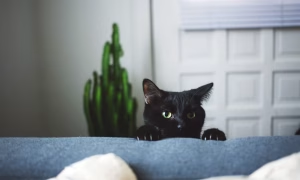
It’s illuminating. They knock pens off my desk, tear into my office chair, sip from water glasses. Mostly, they just are – calm, indifferent to my absence.
No, they don’t pine for me. They’re cats. They exist on their own terms. “Cats are a window into a world outside of the human one,” says Gray. “They remain who they are. They may adapt to us, but they don’t become like us.”
Which is perhaps the point. We shouldn’t try to make cats more human – instead, maybe we should learn something from them. “The real question,” says Gray, “is: what can we learn from cats that helps us live better?” Maybe it’s their contentment, their presentness, their refusal to be anything but themselves.
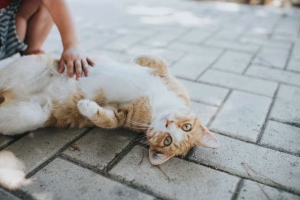
The ancient Egyptians may have had the right idea: they worshipped cats. Mut, the mother goddess, was often shown as a cat. “It’s that sense of self-possession,” Gray adds. “They live on their own terms.”
And maybe that’s all we need to do – admire them, respect their ways, and leave them to it.
As I unplug the cameras and let Larry and Kedi return to their unmonitored lives, I watch one last clip. A tiny paw reaches toward the lens – curious, unbothered. On the other side, I’m still trying to decipher the mystery, chasing the effortless peace that, for cats, comes naturally.
